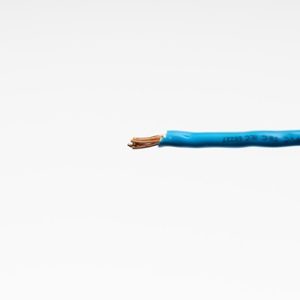-
1.5mm | CU/PVC copper wire Stranded 1.5mm thick
1.5mm | CU/PVC copper wire Stranded 1.5mm thick
-
1m.m | stranded CU/PVC copper wire 1mm
Key Features of 1m.m CU/PVC Copper Wire
- 1m.m Diameter: The 1m.m size refers to the cross-sectional diameter of the copper conductor, providing optimal conductivity for medium to high electrical loads.
- Copper Conductor (CU): Copper is highly regarded for its excellent electrical conductivity, low resistance, and flexibility, making it an ideal material for electrical wiring.
- PVC Insulation: The wire is coated with a PVC sheath, which acts as an insulator to protect against electrical shocks, mechanical damage, and environmental elements like moisture, chemicals, and heat.
-
2m.m | 2m.m stranded CU/PVC copper wire
2m.m | 2m.m stranded CU/PVC copper wire
Key Features of 2m.m CU/PVC Copper Wire
- 2m.m Diameter: The 2m.m size refers to the cross-sectional diameter of the copper conductor, providing optimal conductivity for medium to high electrical loads.
- Copper Conductor (CU): Copper is highly regarded for its excellent electrical conductivity, low resistance, and flexibility, making it an ideal material for electrical wiring.
- PVC Insulation: The wire is coated with a PVC sheath, which acts as an insulator to protect against electrical shocks, mechanical damage, and environmental elements like moisture, chemicals, and heat.
-
3m.m | 3m.m stranded CU/PVC copper wire
Key Features of 3mm CU/PVC Copper Wire
- 3m.m Diameter: The 3m.m size refers to the cross-sectional diameter of the copper conductor, providing optimal conductivity for medium to high electrical loads.
- Copper Conductor (CU): Copper is highly regarded for its excellent electrical conductivity, low resistance, and flexibility, making it an ideal material for electrical wiring.
- PVC Insulation: The wire is coated with a PVC sheath, which acts as an insulator to protect against electrical shocks, mechanical damage, and environmental elements like moisture, chemicals, and heat.




